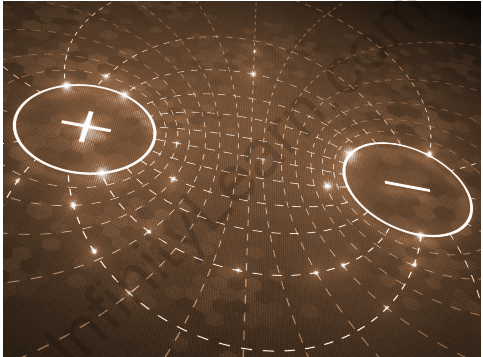Table of Contents

Introduction
Magnetic forces can be observed in a magnetic field, which is a vector field around a magnet, an electric current, or a changing electric field. A magnetic field is formed by moving electric charges and inherent magnetic moments of basic particles coupled with a fundamental quantum feature known as spin. Both the magnetic and electric fields are components of electromagnetic force, which is one of nature’s four fundamental forces.
Magnetic Field History
In 1269, French scholar Petrus Peregrinus de Maricourt used iron needles to map the magnetic field on the surface of a spherical magnet for the first time. The resulting field lines crossed at two locations, he noted. These points were dubbed “poles” by him. Following this finding, he asserted that magnets always have North and South poles, regardless of how thinly they are sliced.
William Gilbert, three centuries later, claimed that the Earth is a magnet.
Magnetic poles attract and repel each other, according to John Mitchell, an English priest and philosopher, who asserted this in 1750.
The magnetic field of the Earth was empirically verified by Charles-Augustin de Coulomb in 1785. Simeon Denis Poisson, a French mathematician and geometer, produced the first model of the magnetic field in the 19th century, which he published in 1824.
By the nineteenth century, new discoveries had refined and challenged previously accepted beliefs.
In 1819, Danish physicist and chemist Hans Christian Orsted discovered that an electric current generates a magnetic field around it.
André-Marie Ampère presented a model of magnetism in 1825, in which the force was attributed to continually flowing current loops rather than magnetic dipoles.
Faraday, an English scientist, demonstrated in 1831 that a changing magnetic field produces an electric field. Electromagnetic induction was, in effect, discovered by him.
What is the function of the magnetic field?
All magnets have north and south poles. Poles on opposite sides attract each other, but poles on the same side repel each other. When you rub a piece of iron against a magnet, the north-seeking poles of the atoms align in the same direction. The force generated by the aligned atoms produces a magnetic field.
Sources of electricity production
Hydro. Hydropower generates electricity by harnessing the energy of flowing water. …
Nuclear. Nuclear power is generated by a nuclear fission process that produces heat, which is then utilised to create steam, which turns turbines to generate electricity. Natural Gas, Biomass, Wind, Oil, Solar.
What is the source of a magnetic field?
The Earth’s magnetic field is instead caused by dynamo action. The movement of liquid metal in the planet’s outer core generates electric currents on Earth. When the Earth turns on its axis, these electric currents form a magnetic field that wraps around the planet.
FAQs:
What causes a magnetic field?
A magnetic field can be created by transferring a charge or by using a magnetic substance. H. C. Oersted, a physicist from the early nineteenth century, discovered that when current runs through a conductor, a magnetic field forms around it.
Who was the first to discover the magnetic field surrounding a conductor?
H. C. Oersted, a physicist from the early nineteenth century, discovered that when current runs through a conductor, a magnetic field forms around it. A magnetic field surrounds a current-carrying conductor.
What are the characteristics of a current-induced magnetic field?
The strength of the magnetic field produced by a current-carrying conductor is exactly proportional to the size of the current. The magnetic field strength at any location is inversely proportional to the distance between the spot and the conductor.





